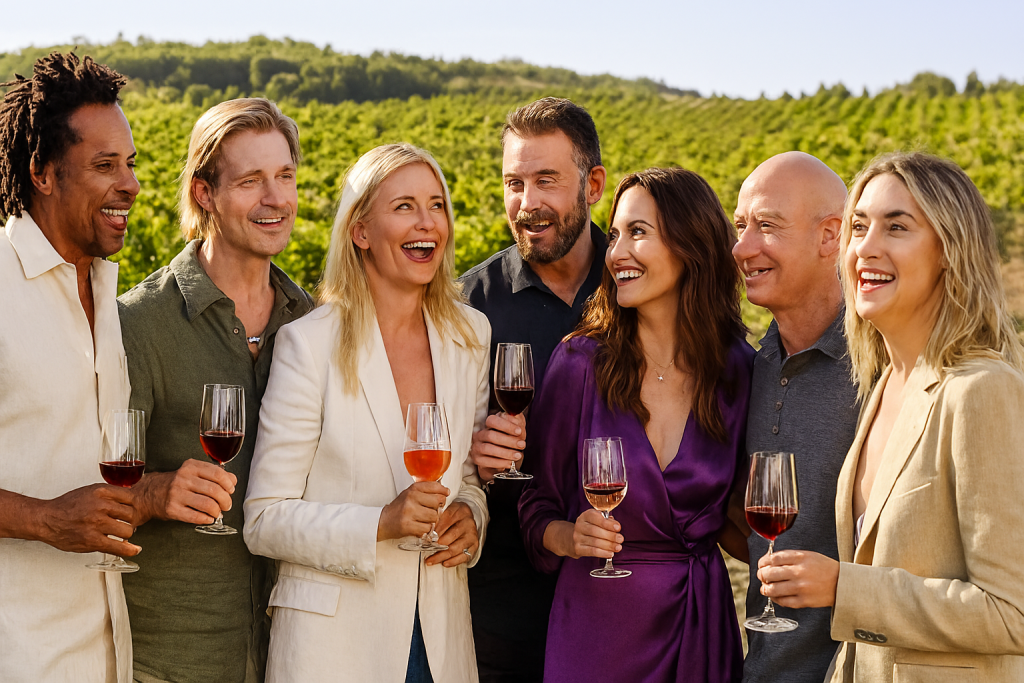Are you ready to dive into the world of wine? Look no further than this comprehensive guide that will take you from wine novice to expert. With over 1,300 wine grape varieties and tips on serving, tasting, and pairing, you’ll be sipping and swirling like a pro in no time. Enhance your wine knowledge and impress your friends with this ultimate resource. So grab a glass, sit back, and let’s uncork the secrets of the vine.
Contents
- The Basics of Wine Grape Varieties
- Serving and Handling Wine: Best Practices
- Developing Your Sense of Taste in Wine
- The Art of Wine and Food Pairing
- Mastering the Art of Buying Wine
- Essential Wine Terminology and Knowledge
- Exploring Different Wine Types and Styles
- Techniques for Tasting Wine Like a Pro
- Choosing the Right Wine Glasses for Every Occasion
- Importance of Wine Training: A Starting Point
The Basics of Wine Grape Varieties
There are over 1,300 wine grape varieties used in commercial production. As a wine beginner, it’s important to have a basic understanding of these varieties to enhance your knowledge of wine. The world of wine can be overwhelming, but knowing the basics about different grape varieties is a great starting point. Each variety brings its own unique characteristics and flavors to the wine, allowing you to explore and discover what you enjoy. Whether it’s the boldness of Cabernet Sauvignon or the crispness of Sauvignon Blanc, understanding different grape varieties will help you navigate the vast world of wine with confidence. So dive in and start exploring the incredible diversity that exists within the realm of wine grapes!
Serving and Handling Wine: Best Practices
To properly serve and handle wine, make sure you choose the right glasses for different occasions. Here are some tips to help you enhance your wine experience:
- Choose the right glassware:
- Red wines: Use taller glasses with a wider opening and larger bowl. This enhances the flavors and aromas of red wine.
- White wines: Opt for glasses with narrower openings and smaller bowls compared to red wine glasses. This helps preserve the delicate aromas and flavors of white wine.
- Serve at the ideal temperature:
- Red wines: Serve at room temperature or slightly cooler (around 60-65°F).
- White wines: Serve chilled but not too cold (around 45-50°F).
Developing Your Sense of Taste in Wine
Explore different flavors in wine and identify common faults to develop your sense of taste. By actively tasting and analyzing various wines, you can train your palate to detect nuances and appreciate the complexities of different varietals. Pay attention to the aromas, flavors, and textures present in each wine you try. Take note of any fruit notes, such as citrus or berries, as well as any herbal or earthy undertones. Additionally, be aware of any faults that may indicate a flawed bottle, such as cork taint or oxidation. Developing your sense of taste takes time and practice, but with dedication, you can become more knowledgeable about wine and better able to enjoy its diverse range of flavors.
The Art of Wine and Food Pairing
Discover the art of pairing wine and food to elevate your dining experience.
- Enhance Flavors: Wine can enhance the flavors of your food, making each bite more enjoyable.
- Red wine pairs well with red meat, as the tannins soften proteins and enhance fat flavors.
- White wine complements light meats like fish and chicken, as the acids enhance taste.
- Create Balance: Pairing food and wine with similar adjectives creates harmony on your palate.
- Sweet foods go well with sweet wines, creating a congruent pairing.
- When pairing with heavy sauces, match the wine to the sauce rather than the meat.
Mastering the Art of Buying Wine
When buying wine, you can become more confident in your selections by familiarizing yourself with different grape varietals and understanding the characteristics of each. Take the time to learn about popular varietals like Cabernet Sauvignon, Pinot Noir, Chardonnay, and Sauvignon Blanc. Each grape has its own unique flavor profile and characteristics that can help guide your choices. For example, Cabernet Sauvignon is known for its boldness and tannic structure, while Pinot Noir is lighter-bodied with delicate flavors. Chardonnay offers a range of styles from crisp and unoaked to rich and buttery. And Sauvignon Blanc is often refreshing with notes of citrus and tropical fruits. By knowing these basic traits, you’ll be better equipped to find wines that suit your personal taste preferences.
Essential Wine Terminology and Knowledge
Learning about the different grape varietals and their characteristics can help you become more confident in selecting wines. Here are some essential wine terminology and knowledge to enhance your understanding:
- Grape Varieties:
- Wine grapes (Vitis vinifera) are smaller, sweeter, have thick skins, and contain seeds.
- Over 1,300 wine grape varieties are used in commercial production.
- Only about 100 of these varieties make up 75% of the world’s vineyards.
- The most planted wine grape in the world is Cabernet Sauvignon.
- Wine Terminology:
- Aeration: Wine exposed to air for flavor enhancement.
- Aggressive: Bitter flavor caused by high tannins or acid.
- Aging: Storing wine in barrels for complex flavors.
- Apértif: Dry wine served before a meal.
- Appellation d’Origine Contrôlée (AOC): French quality seal for wine production.
Exploring Different Wine Types and Styles
To broaden your understanding of wine, let’s delve into the world of different wine types and styles. Wine comes in a wide variety of types and styles, each with its own unique characteristics and flavors. From sparkling wines like Champagne and Cava to still wines such as reds, whites, and rosés, there is something for everyone’s palate. Red wines can range from light-bodied to full-bodied, with flavors that can be fruity, earthy, or spicy. White wines offer a refreshing alternative with crisp acidity and notes of citrus or tropical fruits. Rosé wines have gained popularity for their versatility and can be dry or slightly sweet. By exploring the diverse range of wine types and styles available, you will discover new favorites that perfectly complement any occasion or meal.
Techniques for Tasting Wine Like a Pro
Exploring different wine types and styles can expand your palate and introduce you to a wide range of flavors. When it comes to tasting wine like a pro, there are a few techniques that can enhance your experience:
- Swirling the wine: This releases flavors and aromas, allowing you to fully appreciate the complexities of the wine.
- Hold the glass by the stem and gently swirl it in a circular motion.
- Watch as the wine coats the sides of the glass, known as “legs” or “tears”.
- Smelling the wine: The aroma can give you clues about its characteristics and help with food pairing.
- Take a moment to inhale deeply and identify any fruit, floral, or earthy notes.
Choosing the Right Wine Glasses for Every Occasion
When it comes to selecting the perfect wine glasses for any occasion, you’ll want to consider factors like the shape of the glass and its ability to enhance the flavors and aromas of different wines. Wine glasses come in various shapes and sizes, each designed to bring out the best in a specific type of wine. Here is a table that illustrates the recommended glassware for different types of wines:
| Wine Type | Glass Shape |
|---|---|
| Red | Taller with wider |
| opening and larger bowl | |
| White | Narrower opening |
| and smaller bowl | |
| Sparkling | Flute |
Importance of Wine Training: A Starting Point
Learning the basics of wine training is essential for servers and wine novices to provide better service and avoid mistakes. By understanding the fundamentals of wine, you can confidently navigate the world of wine and enhance your knowledge. Here are some helpful tips to get you started:
- Familiarize yourself with popular wines:
- Focus on popular varietals to practice new wine knowledge.
- Get to know the wines on your restaurant’s menu.
- Explore different growing regions:
- Notable growing regions for rosé include Italy, France, and the U.S.
- Other popular wines come from France, Spain, California, and Italy.




